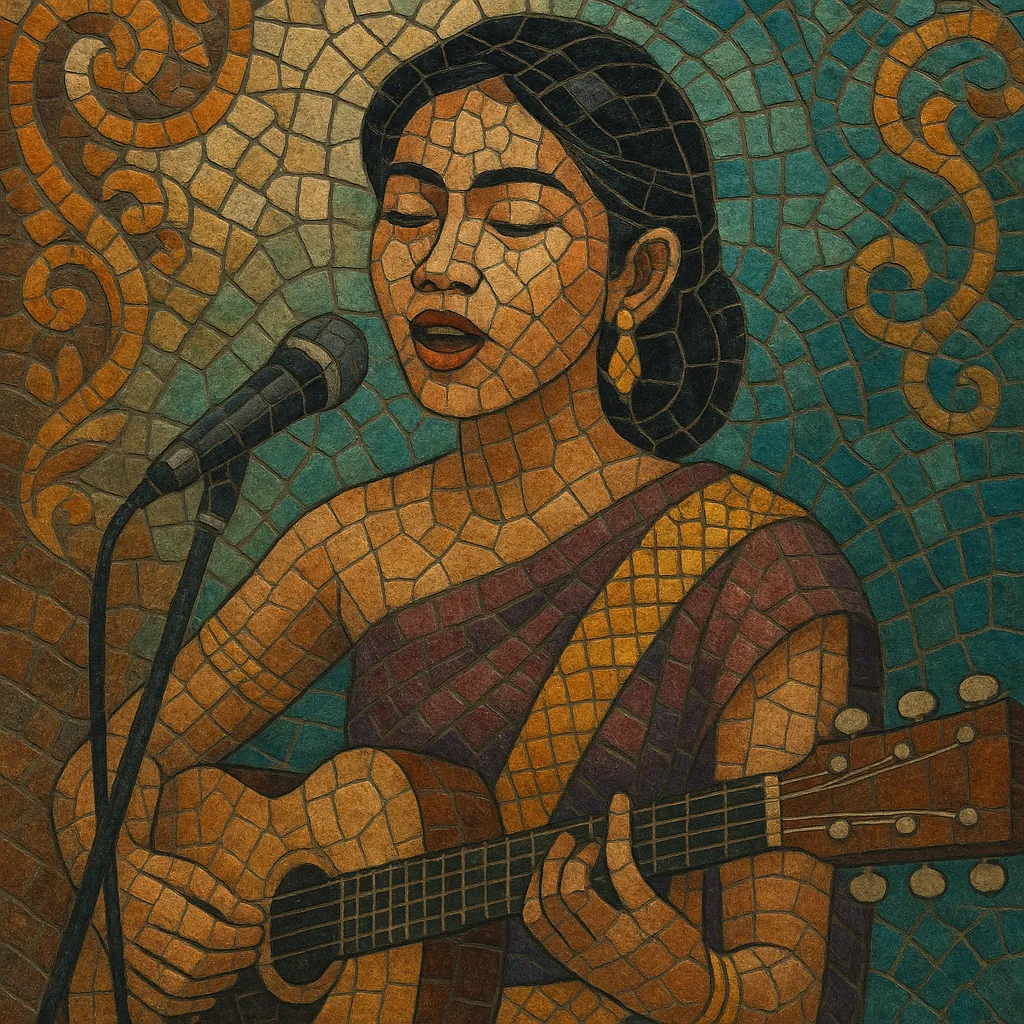Cambodian pop is a hybrid mainstream style that fuses Khmer melodic sensibilities with Western pop songcraft.
It emerged during the 1960s “golden age” around Phnom Penh’s lively radio and nightclub scene, blending traditional Khmer vocal phrasing and dance rhythms with rock ’n’ roll, surf, soul, and French chanson. Iconic singers such as Sinn Sisamouth, Ros Serey Sothea, and Pan Ron helped define a sound that felt both modern and distinctly Cambodian.
After the devastation of the Khmer Rouge era, the style was rebuilt by the diaspora and a revitalized local industry. In the 2000s–2020s, Cambodian pop incorporated K‑pop/J‑pop polish, EDM and dance‑pop production, and hip hop crossovers, while continuing to foreground Khmer lyrics, romantic themes, and wedding/festival dance grooves like romvong.
Cambodian pop took shape in 1960s Phnom Penh, where state patronage, bustling nightclubs, and radio fostered a cosmopolitan music scene. Artists such as Sinn Sisamouth, Ros Serey Sothea, and Pan Ron adapted Khmer melodies and poetic lyricism to Western forms—rock ’n’ roll, surf, soul—and French chanson. Backed by twangy guitars, Farfisa organs, and horn sections, these singers created a modern pop that still sounded unmistakably Khmer, often tied to social dances like romvong.
The Khmer Rouge regime brutally suppressed popular music; countless musicians were killed and archives destroyed. The country’s pop infrastructure collapsed, leaving only scattered tapes and memories preserved by fans and the diaspora.
In Cambodian communities abroad (France, the U.S., Australia), singers and bands kept Khmer pop alive through weddings, community events, and home‑dubbed cassettes. Compilations and reissues in the 1990s sparked international curiosity about the 1960s–70s “golden age,” while a reopening Cambodia saw a growing cassette/CD and karaoke industry.
Local labels and TV music programs (e.g., Hang Meas) professionalized production. Stars like Preap Sovath, Sokun Nisa, Aok Sokunkanha, and Khemarak Sereymon popularized slick ballads and dance‑pop. The 2010s–2020s ushered in strong K‑pop/J‑pop and EDM influence, high‑definition videos, and YouTube‑driven fandoms. Artists such as Laura Mam and SmallWorld SmallBand advocated original songwriting in Khmer and global collaborations, while hip hop crossovers (e.g., VannDa) blended rap with pop hooks, keeping Cambodian pop current yet rooted in Khmer language and culture.


